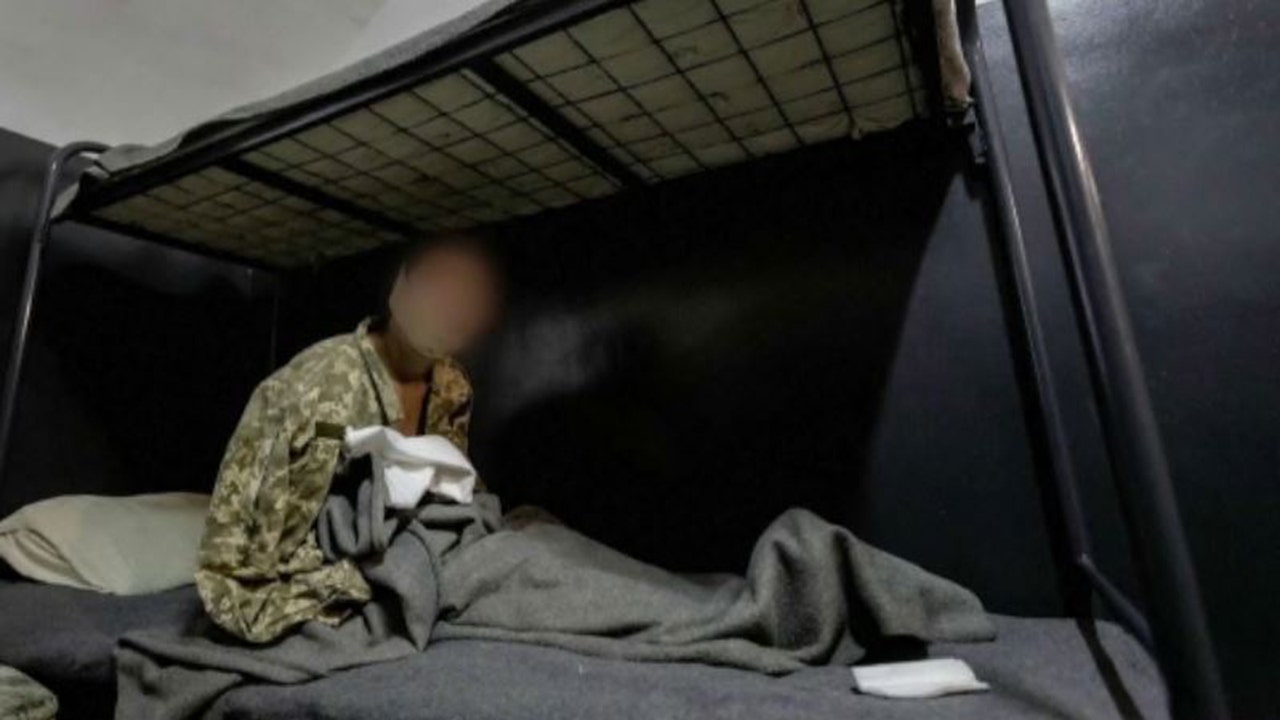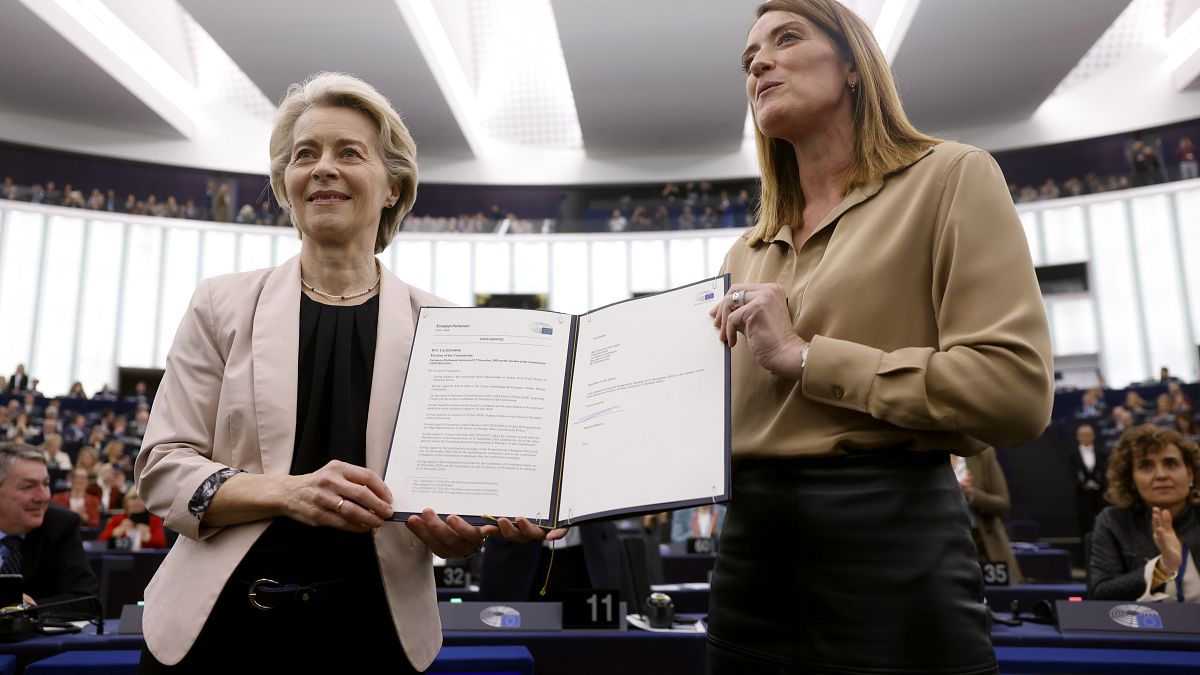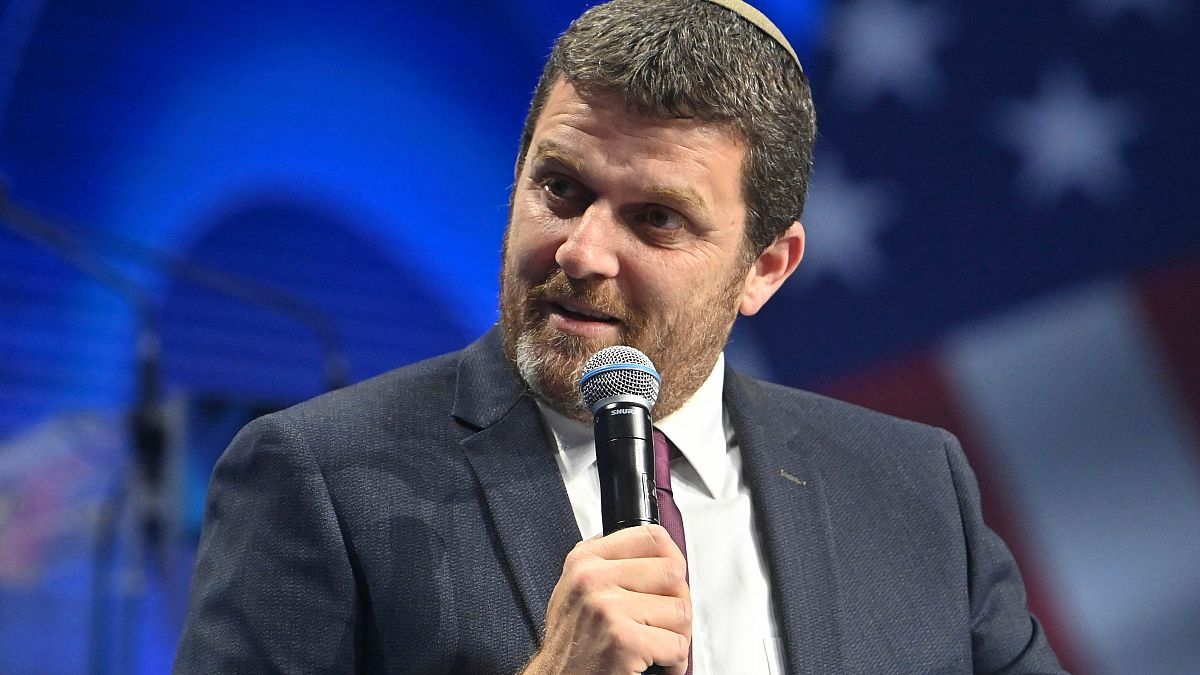World
Belgian MEP charged in EU corruption scandal speaks following release

Marc Tarabella is one of six defendants accused of taking bribes from Qatar.
One of the MEPs implicated in the European Parliament’s cash-for-influence scandal has described his ordeal as “not easy”, saying he does not deserve what has happened.
Marc Tarabella, a Belgian politician held a press conference on Wednesday, where he explained in tears the difficulties he has faced as his life as a European lawmaker fell apart.
“I see my face on the front page of the JT (Belgian TV) every night. My name is everywhere, smeared, the name of my family, my mother, my wife, my daughter and my son, who have never deserved this either,” he told reporters.
The socialist MEP was arrested in February and released from prison last month, although he was placed under electronic monitoring which has since been lifted. He is now awaiting trial.
It is a status he has taken advantage of to explain his version of events: from the unexpected searches at his home to his days in jail.
“A large number of police officers arrived at the house, accompanied by the judge and my (European Parliament) President Roberta Metsola, for a search. I was stunned,” he said during a press conference.
“My wife and son were shocked. The policemen were very kind. They explained to me that they were looking for money. I don’t understand what money. I have nothing to reproach myself for. Why do I find myself with a dozen policemen, a judge and the President of the Parliament and officers?”
He also said he felt betrayed by a man he considered a friend, Pier-Antonio Panzeri, the accused former MEP, who decided to cooperate with the police.
“All this on the sole basis of the words of a man who would later admit to being the head of a criminal organisation and who threw my name out to avoid being eaten,” Tarabella said.
“I spent several months in prison. Prison is not easy for a guilty person, but even worse for an innocent person.”
According to his lawyer Maxim Töller, the Belgian MEP will have to respond to any call from the police, not leave the territory without prior agreement and avoid contacting the other people charged in the case.
All six defendants have been released from jail and are awaiting trial.

World
India kicks off a massive Hindu festival touted as the world's largest religious gathering
PRAYAGRAJ, India (AP) — Millions of Hindu devotees, mystics and holy men and women from all across India flocked to the northern city of Prayagraj on Monday to kickstart the Maha Kumbh festival, which is being touted as the world’s largest religious gathering.
Over about the next six weeks, Hindu pilgrims with gather at the confluence of three sacred rivers — the Ganges, the Yamuna and the mythical Saraswati — where they will take part in elaborate rituals, hoping to begin a journey to achieve Hindu philosophy’s ultimate goal: the release from the cycle of rebirth.
Here’s what to know about the festival:
A religious gathering at the confluence of three sacred rivers
Hindus venerate rivers, and none more so than the Ganges and the Yamuna. The faithful believe that a dip in their waters will cleanse them of their past sins and end their process of reincarnation, particularly on auspicious days. The most propitious of these days occur in cycles of 12 years during a festival called the Maha Kumbh Mela, or pitcher festival.
The festival is a series of ritual baths by Hindu sadhus, or holy men, and other pilgrims at the confluence of three sacred rivers that dates to at least medieval times. Hindus believe that the mythical Saraswati river once flowed from the Himalayas through Prayagraj, meeting there with the Ganges and the Yamuna.
Bathing takes place every day, but on the most auspicious dates, naked, ash-smeared monks charge toward the holy rivers at dawn. Many pilgrims stay for the entire festival, observing austerity, giving alms and bathing at sunrise every day.
“We feel peaceful here and attain salvation from the cycles of life and death,” said Bhagwat Prasad Tiwari, a pilgrim.
The festival has its roots in a Hindu tradition that says the god Vishnu wrested a golden pitcher containing the nectar of immortality from demons. Hindus believe that a few drops fell in the cities of Prayagraj, Nasik, Ujjain and Haridwar — the four places where the Kumbh festival has been held for centuries.
The Kumbh rotates among these four pilgrimage sites about every three years on a date prescribed by astrology. This year’s festival is the biggest and grandest of them all. A smaller version of the festival, called Ardh Kumbh, or Half Kumbh, was organized in 2019, when 240 million visitors were recorded, with about 50 million taking a ritual bath on the busiest day.
Maha Kumb is the world’s largest such gathering
At least 400 million people — more than the population of the United States — are expected in Prayagraj over the next 45 days, according to officials. That is around 200 times the 2 million pilgrims that arrived in the Muslim holy cities of Mecca and Medina in Saudi Arabia for the annual Hajj pilgrimage last year.
The festival is a big test for Indian authorities to showcase the Hindu religion, tourism and crowd management.
A vast ground along the banks of the rivers has been converted into a sprawling tent city equipped with more 3,000 kitchens and 150,000 restrooms. Divided into 25 sections and spreading over 40 square kilometers (15 square miles), the tent city also has housing, roads, electricity and water, communication towers and 11 hospitals. Murals depicting stories from Hindu scriptures are painted on the city walls.
Indian Railways has also introduced more than 90 special trains that will make nearly 3,300 trips during the festival to transport devotees, beside regular trains.
About 50,000 security personnel — a 50% increase from 2019 — are also stationed in the city to maintain law and order and crowd management. More than 2,500 cameras, some powered by AI, will send crowd movement and density information to four central control rooms, where officials can quickly deploy personnel to avoid stampedes.
The festival will boost Modi’s support base
India’s past leaders have capitalized on the festival to strengthen their relationship with the country’s Hindus, who make up nearly 80% of India’s more than 1.4 billion people. But under Prime Minister Narendra Modi, the festival has become an integral part of its advocacy of Hindu nationalism. For Modi and his party, Indian civilization is inseparable from Hinduism, although critics say the party’s philosophy is rooted in Hindu supremacy.
The Uttar Pradesh state, headed by Adityanath — a powerful Hindu monk and a popular hard-line Hindu politician in Modi’s party — has allocated more than $765 million for this year’s event. It has also used the festival to boost his and the prime minister’s image, with giant billboards and posters all over the city showing them both, alongside slogans touting their government welfare policies.
The festival is expected to boost the ruling Hindu nationalist Bharatiya Janata Party’s past record of promoting Hindu cultural symbols for its support base. But recent Kumbh gatherings have also been caught in controversies.
Modi’s government changed the city’s Mughal-era name from Allahabad to Prayagraj as part of its Muslim-to-Hindu name-changing effort nationwide ahead of the 2019 festival and the national election that his party won. In 2021, his government refused to call off the festival in Haridwar despite a surge in coronavirus cases, fearing a backlash from religious leaders in the Hindu-majority country.
——
Associated Press religion coverage receives support through the AP’s collaboration with The Conversation US, with funding from Lilly Endowment Inc. The AP is solely responsible for this content.
World
Ukraine has captured 2 North Korean soldiers, South Korea's intelligence service says

Ukraine captured two wounded North Korean soldiers who were fighting on behalf of Russia in a Russian border region, South Korea’s intelligence service said, confirming an account from Ukrainian President Volodymyr Zelenskyy on Saturday.
Seoul’s National Intelligence Service (NIS) told AFP it has “confirmed that the Ukrainian military captured two North Korean soldiers on January 9 in the Kursk battlefield in Russia.”
The confirmation comes after Zelenskyy said in a post on the Telegram messaging app that the two captured North Korean soldiers were wounded and taken to Kyiv, where they are communicating with Ukrainian security services SBU.
SBU released video that appears to show the two prisoners on beds inside jail cells. The authenticity of the video could not be independently verified.
TRUMP’S DESIGNATED SPECIAL ENVOY FOR UKRAINE AND RUSSIA SETS LONGER TIMETABLE THAN ‘24 HOURS’ FOR ENDING WAR
In this unverified photo shared by the Ukrainian military, an apparent captured North Korean soldier with injuries is sitting in a bed inside a cell. (Ukraine Military handout)
A doctor interviewed in the SBU video said one soldier suffered a facial wound while the other soldier had an open wound and a lower leg fracture. Both men were receiving medical treatment.

In this unverified photo shared by the Ukrainian military, an apparent captured North Korean soldier with injuries is lying in a bed inside a cell. (Ukraine Military handout)
SBU also said one of the soldiers had no documents at all, while the other had been carrying a Russian military ID card in the name of a man from Tuva, a Russian region bordering Mongolia.
Ukraine’s military says North Korean soldiers are outfitted in Russian military uniforms and carry fake military IDs in their pockets, a scheme that Andrii Yusov, spokesperson for Ukraine’s military intelligence agency, says could mean Moscow and “its representatives at the U.N. can deny the facts.”
Despite Ukrainian, U.S. and South Korean assertions that Pyongyang has sent 10,000 – 12,000 troops to fight alongside Russia in the Kursk border region, Moscow has never publicly acknowledged the North Korean forces.
TRUMP SETTING UP MEETING WITH PUTIN, IN COMMUNICATION WITH XI
While reports of their presence first emerged in October, Ukrainian troops only confirmed engagement on the ground in December.
On Thursday, Zelenskyy put the number of killed or wounded North Koreans at 4,000, though U.S. estimates are lower, at around 1,200.

Soldiers are seen at Kim Il Sung Square in Pyongyang, North Korea, on Oct. 12, 2020. (AP Photo/Jon Chol Jin, File)
Despite North Korea’s suffering losses and initial inexperience on the battlefield, Ukrainian soldiers, military intelligence and experts suggest first-hand experience will only help them develop further as a fighting force.
CLICK TO GET THE FOX NEWS APP
“For the first time in decades, the North Korean army is gaining real military experience,” Yusov said. “This is a global challenge — not just for Ukraine and Europe, but for the entire world.”
The Associated Press contributed to this report.
World
Three people killed in an avalanche in Italy's Leopontine Alps

A group of five skiers was hit by the avalanche above the village of Trasquera in the Piedmont region. Two survived and were helicoptered to hospital.
The avalanche broke away around 12.30pm on the eastern face of Punta Valgrande, a summit in the Leopontine Alps, on the border between Italy and Switzerland.
The skiers who died were dragged down the snowy mountain for several hundred metres from where they had been skiing at over 2,800 metres. The bodies have not yet been recovered because they are awaiting authorisation from the local magistrate.
An alert had been issued in the area above 2,100 metres, which warned of “considerable danger of avalanches.” The alert was at level 3, with 5 being the most dangerous.
It is not yet clear whether the rescuers were alerted by a skier who saw the avalanche sweeping away three people, or by the other two people who managed to save themselves. According to reports, the group was going uphill with crampons and then descending with skis.
-

 Politics1 week ago
Politics1 week agoCarter's judicial picks reshaped the federal bench across the country
-

 Politics1 week ago
Politics1 week agoWho Are the Recipients of the Presidential Medal of Freedom?
-

 Health1 week ago
Health1 week agoOzempic ‘microdosing’ is the new weight-loss trend: Should you try it?
-

 World1 week ago
World1 week agoSouth Korea extends Boeing 737-800 inspections as Jeju Air wreckage lifted
-
/cdn.vox-cdn.com/uploads/chorus_asset/file/25822586/STK169_ZUCKERBERG_MAGA_STKS491_CVIRGINIA_A.jpg)
/cdn.vox-cdn.com/uploads/chorus_asset/file/25822586/STK169_ZUCKERBERG_MAGA_STKS491_CVIRGINIA_A.jpg) Technology4 days ago
Technology4 days agoMeta is highlighting a splintering global approach to online speech
-

 News1 week ago
News1 week agoSeeking to heal the country, Jimmy Carter pardoned men who evaded the Vietnam War draft
-

 Science1 day ago
Science1 day agoMetro will offer free rides in L.A. through Sunday due to fires
-

 News1 week ago
News1 week agoTrump Has Reeled in More Than $200 Million Since Election Day



















